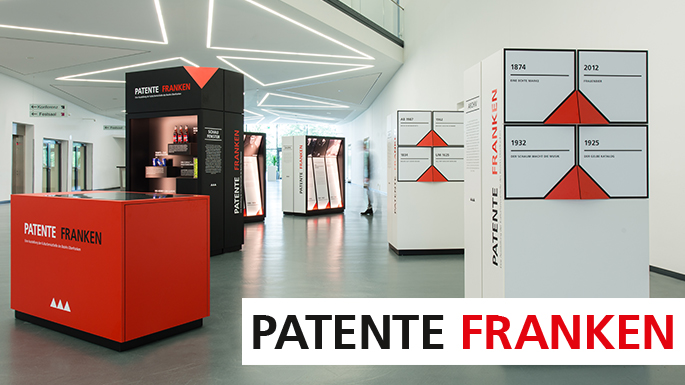
Heimatmuseum
Heimatmuseum Ebermannstadt
Die Geschichte unserer Stadt lässt das Heimatmuseum seit seiner Gründung 1923 vor den Augen interessierter Besucher wieder auferstehen. Es wird seit 1992 von einem ehrenamtlichen Beirat betreut, der es sich zur Aufgabe gemacht hat, das Museum zu modernisieren und die Präsentation der Objekte den museumspädagogischen Erkenntnissen unserer Zeit anzupassen.
Eindrucksvolle Einblicke in die Erdgeschichte bietet zum Beispiel die viel bestaunte Fossiliensammlung. Das bekannteste und eindrucksvollste Stück ist der 1999 in einem örtlichen Steinbruch gefundene Fischsaurier. Doch die Reise führt noch weiter durch die bewegte Vergangenheit: Das Heimatmuseum entführt Sie zurück in die frühgeschichtliche Besiedlung, schildert lebendig den Alltag der Frau und zeichnet die Entwicklung des Handwerks sowie des Brauwesens nach. Dem Leben und Werk des Ebermannstädter Bildhauers Friedrich Theiler (1748 – 1826) hat das Museum einen weiteren Schwerpunkt gewidmet.
Öffnungszeiten
(März bis Oktober)
- Mittwoch, 15:00 – 17:00 Uhr
- Sonn- und Feiertage, 14:00 – 17:00 Uhr
- für Gruppen nach Vereinbarung
Eintrittspreise
- Familienkarte 3,50 €
- Erwachsene 2,00 €
- freier Eintritt für Kinder unter 16 Jahren
- mit Erlebnis-, Ferien- oder Däumling-Familienpass Ermäßigung jeweils 0,50 €
- Führungen für Schulklassen 1,00 € pro Kind (Freier Eintritt für zwei Begleitpersonen)
Adresse
1. Stock des Bürgerhauses
Bahnhofstraße 5
91320 Ebermannstadt
Internationaler Museumstag am 19.05.2024
Bald ist es wieder so weit. Der Internationale Museumstag wird dieses Jahr am 19.05.2024 gefeiert. Dieses Jahr bietet das Museum ein besonderes Angebot für Kinder zwischen 6 und 10 Jahren an:
Beim „museum in the dark“ zwischen 15:00 – 16:00 Uhr kannst Du mit Deiner eigenen Taschenlampe die Dauerausstellung des Museums erkunden und dabei ein Rätsel lösen. An der Kasse wartet eine kleine Überraschung auf dich.
Das Heimatmuseum Ebermannstadt beteiligt sich wie jedes Jahr mit freiem Eintritt zwischen 14:00 – 17:00 Uhr. Die Sonderausstellung „Playmobil, Jeans und Wienerle – Patente Franken“: Erfindungen und Entwicklungen in und aus Franken ist die ganze Zeit zugänglich.

Vorträge in Zusammenarbeit mit dem Kulturkreis Ebermannstadt e.V.
Der Kulturkreis Ebermannstadt lädt in Kooperation mit der „Kirchenstiftung St. Jakobus Niedermirsberg“ am Samstag, den 29.06.2024 um 18:30 Uhr zu einem Vortrag über die Baugeschichte der Niedermirsberger Jakobuskirche ein.
Mehr erfahren
Die Niedermirsberger St. Jakobus Kirche blickt auf eine lange, wechselvolle Geschichte zurück. In seiner Masterarbeit hat Johannes Paulus bislang nicht bekannte Details zur Baugeschichte der Kirche ans Licht gebracht, die eine teilweise Revision des bisherigen Wissenstandes erfordern.
Durch die neuerlichen Untersuchungen konnten wichtige Baudaten revidiert bzw. festgeschrieben werden. Hierzu leistete die Dendrochronologie den wichtigsten Beitrag. Die Untersuchungen erbrachten wertvolle Erkenntnisse in Bezug auf Bauabfolge, frühere Gebäudeformen und spätere Veränderungen. Neben den eindeutigen Datierungen des Turms, des Glockenstuhls und des Langhausdachs konnten auch Aussagen in Form einer relativen Chronologie getroffen werden, nach der nicht, wie bisher vermutet, der Turm der älteste erhaltene Bauteil ist, sondern zumindest Teile des Langhauses noch die romanischen Mauern beinhalten.
Der Vortrag von Johannes Paulus findet bei freiem Eintritt im Anschluss an die Vorabendmesse (17:00 Uhr) im Feuerwehrhaus Niedermirsberg, Niedermirsbergerstr. 51 statt.

Sonderausstellung „Patente Franken“ – Entdeckungen, Erfindungen und Entwicklungen in und aus Franken
3. März 2024 bis 30.Oktober 2024
Die Sonderausstellung im Heimatmuseum Ebermannstadt nimmt verschiedene Personen in den Blick, welche in Franken Dinge erfunden, entdeckt oder entwickelt haben oder stellt Menschen aus Franken dar, die in anderen Teilen der Welt Entdeckungen, Erfindungen und Entwicklungen geleistet haben. Der aus Gasseldorf bei Ebermannstadt stammende Erfinder der Wiener Würstchen – Johann Georg Lahner – brachte es in Wien mit seiner Wurstkreation zu Weltruhm. Er wird in der Präsentation im Heimatmuseum Ebermannstadt im Mittelpunkt stehen.


Kontakt
